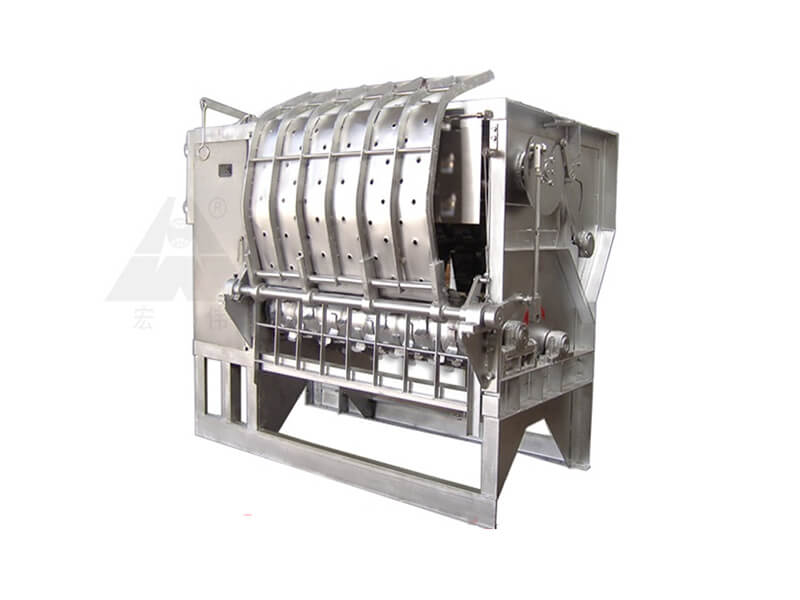
The first method involves the use of a pig scalding tank. After bleeding, the pigs are unloaded onto the receiving table of the scalding tank. The pig body is then carefully slid into the tank for scalding. Scalding can be performed either manually or using machinery.
It is important to maintain the water temperature between 58-62℃, as excessively high temperatures may result in a whitening effect on the pig body, which adversely affects the subsequent dehairing process. The recommended scalding time ranges from 4 to 6 minutes. To release water vapor, a “skylight” is designed directly above the pig scalding tank.
An alternative approach involves utilizing a sealed canal-type pig scalding tank. Here, the pig body is automatically transported into the tank via an inclined rail connected to the bloodletting conveyor line. To ensure optimal scalding, the pig remains submerged in the tank for 4-6 minutes. During the conveying and scalding process, a pressure rod is employed to keep the pig body submerged, preventing it from floating. The sealed canal-type tank offers excellent heat preservation capabilities. After scalding, the pigs are automatically transported out through an uphill bend rail via an automated conveyor line.
The steam pig scalding tunnel system represents a significant technological advancement in pig scalding. After bleeding, the pigs are hung on an automatic bloodletting conveyor line and enter the steam scalding tunnel. This method greatly reduces labor intensity, enhances work efficiency, and enables mechanized scalding operations. Moreover, it eliminates the risk of cross-infection between pigs, resulting in more hygienic meat products. Currently, the steam pig scalding tunnel system stands as the most advanced technology available for pig scalding.
For the dehairing process, horizontal pig hydraulic dehairing machines are employed. These machines come in different models catering to small, medium, and large pigs. Once the pig has been scalded, it is removed from the tank using a rake and automatically enters the dehairing machine.
The spiral pig dehairing machine is utilized in conjunction with a top-sealed scalding tank or a steam scalding tunnel system. Following scalding, the pigs are unloaded from the automatic bloodletting conveyor line using a pig unloader and transferred to the spiral dehairing machine.
Soft paddles and the spiral advancement mechanism work together to remove the remaining hair, pushing the dehaired pig body toward the opposite end of the dehairing machine. The pig then enters the trimming conveyor for final trimming.
Next process is pork carcass splitting.
If you want more information, please contact us by email or WhatsApp. You can add our WhatsApp by scanning the QR code on the right.




